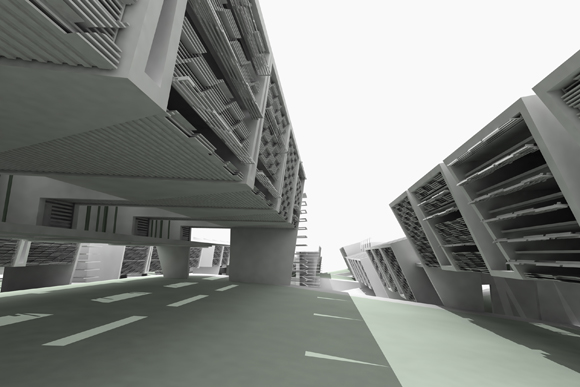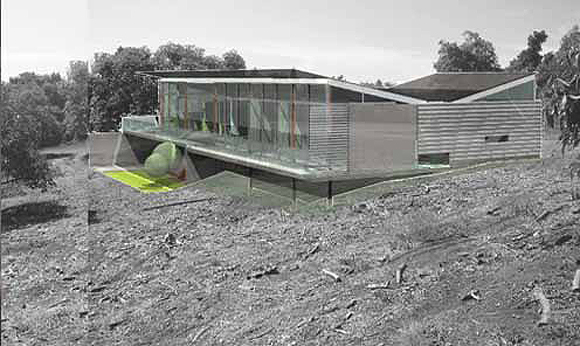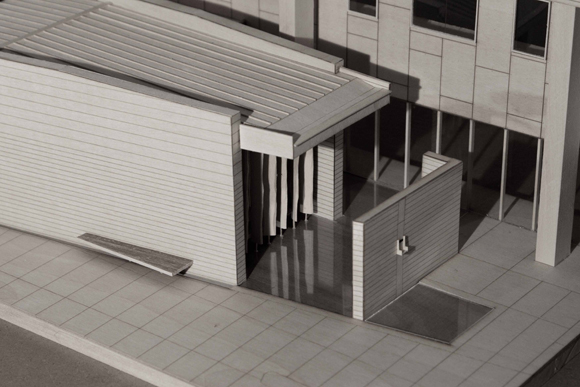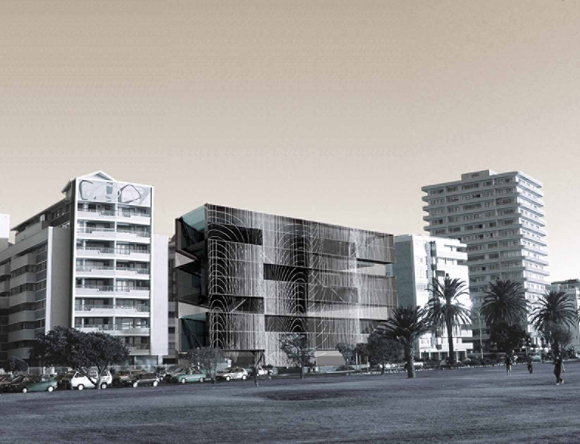
Cole Butler
Woodbury 1995
Laughing Gravy Studios, Truckee
Licensed CA, NV
My first job out of school was for a scenery company in Carson City, and I went on to do fire special effects. I’ve been a local planning commissioner, helped establish a 501c3 for the Sierra Green Building Association, and am helping to establish a co-housing community. I have a straw bale home under construction and am starting DD on a Tahoe City fire station. I’ve found the ideal schedule is Monday through Thursday, six weeks on, two weeks off. The time off comes without pay, projects go slower, but I do a better job when I am not so stressed out. I aspire to be involved with aesthetic projects that contribute to healing the planet.

Dominic Leong
SLO 2001, Columbia 2003
PARA, Brooklyn, NY
I had the chance to work in Bernard Tschumi’s office during his transition from academia to full-time practitioner. I share Bernard’s disdain for pure formalism, but I am not “anti-form.” This discourse still provides a critical perspective, given the increasingly dexterous formalism we see today. I strongly agree with Bernard when he says, “Architecture is not a knowledge of form, but a form of knowledge.” Architects will always design buildings; that is what the public expects, so that’s where we start, what we hope to master and go beyond, to deploy the knowledge of “architectural” thinking to many more arenas.

Juan Moreno
Pomona 1992
Ghafari Associates, Chicago, IL
Licensed, CA
I have been helping El Valor, an organization started thirty years ago by a Latina woman with a disabled son. She found that there were no reintegration services in Chicago to help her son become a viable part of society. They have a vision for an International Inclusion Center, bringing together people of all disabilities and ethnic and socioeconomic backgrounds to learn to reintegrate through the culinary arts, horticulture, and music. I’ve also begun assisting Causes for Change International with their vision for developing Exploration Institutes for Children and Youth with Disabilities throughout Latin America.

Eric Nulman
SLO 1999, Harvard 2004
Lecturer, Cal Poly SLO
Licensed NY
Among Morphosis, Grimshaw Architects, and Ateliers Jean Nouvel, I expected the obvious differences in models of practice and theoretical frameworks, but differences in mentorship were more challenging than I anticipated. At Morphosis, small project teams enabled a comprehensive understanding of the project, team hierarchy was relatively flat, and team members participated in consultant and client meetings. The mentor-protégé relationship Mayne developed—and to which project managers and architects were committed—led to consistent quality. Access to Sir Nicholas Grimshaw was limited; nevertheless, the strong office infrastructure focused on employee development. Three partners, each offering a specific expertise, were easily approachable. I participated in most internal meetings, but only external meetings that related to my deliverables package—and never client meetings. At Ateliers Jean Nouvel, in a joint venture with Foster and Partners, the team struggled constantly, due to lack of hierarchy between the offices and a difference in practice models, and there was no apparent effort towards mentorship.

Justin Piercy
Pomona 1996
Alonso Balaguer + Associates, Barcelona
My first job, at a giant Southern California engineering firm, did not provide much inspiration but did provide a solid foundation for organizing a project. A few of the more interesting things I did in San Francisco are: set design for a FOX-TV/NFL commercial; forming a collective of artists, graphic designers, animators, musicians, music producers, and architects in a downtown warehouse space, where we met to create and play; designing and installing a sensory art event to showcase work from a graphic design firm’s five global offices; and a video-sculpture installation for a championship boxing event.

Craig Rizzo
Woodbury 1994, Art Center 1998
Zimmer Gunsul Frasca Architects LLP, Seattle, WA
I had the great fortune of a small school environment, more like a family, and it’s amazing what everyone’s doing: architecture, fashion design, set design, animation, construction, teaching (all ages), city planners, developers, I think even a baker. I had always wanted to pursue fine art and considered dropping out of architecture to do so, but I’m glad I didn’t. I learned a lot in school and later received my MFA at Art Center in Pasadena. I’ve done rock concert stage sets for Korn, Limp Bizkit, and Ice Cube, and I had a gig on The Discovery Channel—it was crazy—as an illustrator on “Monster House.”

Scott Uriu
Pomona 1993
B+U, Los Angeles
Licensed CA
The early ‘90s were a tumultuous period in L.A.: Rodney King riots, Northridge earthquake, recession. Offices used technology to dig out of the economic wreckage. We started designing with software developed for the aerospace or movie industry. The thing to own was the refrigerator size ONYX from SGI, one of the few computers that had a powerful enough graphics engine to run sophisticated 3D programs. We experienced an evolution like the music recording industry a decade earlier: from all analog recording to all digital, and then a mixture of the two. Today we write our own software.

Michael Young
SLO 1997, Princeton 2005
Assistant Professor Adjunct, Cooper Union, NY
Licensed NY
My wife just had a baby, and things have gotten really busy.
Consistent with arcCA’s practice of “casting a wide net, but poorly mended,” we asked the two Bay Area architecture schools to survey their graduating classes of 1998 (one B. Arch., one M. Arch.), and we learned the following things:
From CCA, of 21 B. Arch. graduates of the Class of ’98, five are principals of architecture firms, five are licensed, two went on to complete masters degrees, and three (or maybe four) are working in related fields: urban design, general contracting, lighting design (unconfirmed), and as Chief Architect for the Hong Kong government.
From UC Berkeley, of 18 respondents from the M. Arch. Class of ’98, three received joint degrees at Cal, four are principals of architecture firms, six are licensed, two went on to complete PhDs, three are university faculty, one is a non-architectural business owner, and one is Housing Development Manager for the City of Oakland. Undergraduate fields of study represented, in addition to architecture, were art, English literature, history, industrial design, linguistics, organizational studies, religious studies, and urban studies.
Originally published 1st quarter 2008, in arcCA 08.1, “‘90s Generation.”





